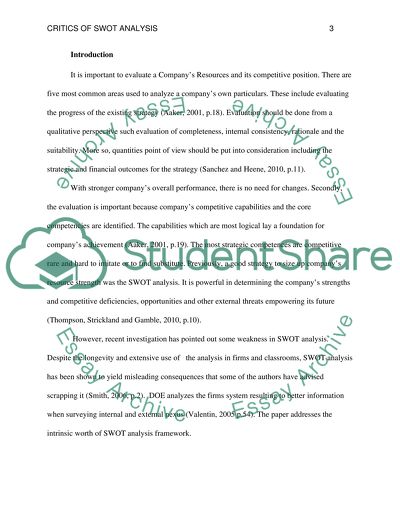Cite this document
(“SWOT analysis is deeply flawed and should not be applied as a modern Essay - 1”, n.d.)
SWOT analysis is deeply flawed and should not be applied as a modern Essay - 1. Retrieved from https://studentshare.org/marketing/1629551-swot-analysis-is-deeply-flawed-and-should-not-be-applied-as-a-modern-marketing-tool
SWOT analysis is deeply flawed and should not be applied as a modern Essay - 1. Retrieved from https://studentshare.org/marketing/1629551-swot-analysis-is-deeply-flawed-and-should-not-be-applied-as-a-modern-marketing-tool
(SWOT Analysis Is Deeply Flawed and Should Not Be Applied As a Modern Essay - 1)
SWOT Analysis Is Deeply Flawed and Should Not Be Applied As a Modern Essay - 1. https://studentshare.org/marketing/1629551-swot-analysis-is-deeply-flawed-and-should-not-be-applied-as-a-modern-marketing-tool.
SWOT Analysis Is Deeply Flawed and Should Not Be Applied As a Modern Essay - 1. https://studentshare.org/marketing/1629551-swot-analysis-is-deeply-flawed-and-should-not-be-applied-as-a-modern-marketing-tool.
“SWOT Analysis Is Deeply Flawed and Should Not Be Applied As a Modern Essay - 1”, n.d. https://studentshare.org/marketing/1629551-swot-analysis-is-deeply-flawed-and-should-not-be-applied-as-a-modern-marketing-tool.


